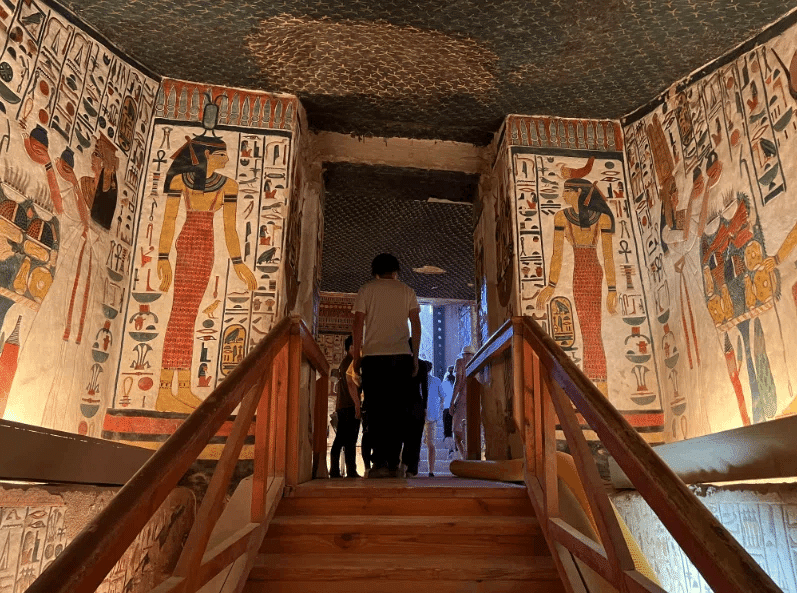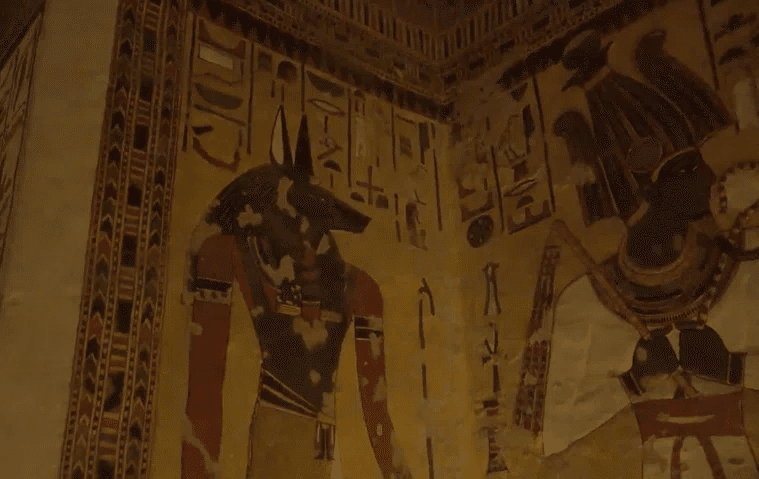
Queens of Ancient Egypt - The Power of Nefertari as Reflected in Her Magnificent Tomb
Among the women who shaped the history of ancient Egypt, Queen Nefertari stands out as an extraordinary figure. Her tomb, widely regarded as the most beautiful in Egypt, is celebrated as a national treasure and continues to captivate visitors. At the World Scan Project, we received special permission to 3D scan and digitally preserve the interior of this remarkable tomb.

Nefertari was not only admired for her beauty but also recognized for her significant political and religious influence in ancient Egypt. This article explores the legacy of Queen Nefertari, uncovering the enduring power and influence revealed through her tomb.
Who Was Queen Nefertari?
Nefertari is celebrated as the beloved queen of Ramesses II, one of ancient Egypt's greatest rulers. Her name, meaning "Beautiful Companion," has immortalized her as a symbol of beauty, yet her importance extends far beyond her appearance. She was the mother of seven children and is thought to have played a key role in diplomacy.

The Most Magnificent Tomb in Egypt
Nefertari’s tomb, situated in the "Valley of the Queens" on Luxor’s west bank, is widely regarded as one of the most exquisite tombs in Egypt. Its vividly preserved murals, painstakingly restored by the Getty Conservation Institute, retain their original vibrant colors. Within the tomb, scenes depict the gods of the underworld welcoming Nefertari, along with her playing Senet, an ancient Egyptian board game.


The Influence of Nefertari as Queen
Nefertari’s influence was vital in bolstering the reign of Ramesses II. Her pivotal diplomatic role is evidenced by letters she sent to the queen of the Hittites.
Moreover, her religious prominence is highlighted by her association with the goddess Hathor, as exemplified by the Abu Simbel Small Temple. Depictions of Nefertari as nearly equal to Ramesses II emphasize her profound impact on both the political and religious realms of ancient Egypt.

Religious Symbols Depicted in Nefertari’s Tomb
The walls of Nefertari’s tomb are adorned with vivid depictions of gods. In one scene, Nefertari is welcomed into the afterlife by deities such as Osiris, Anubis, and Ra-Horakhty, symbolizing her passage through the underworld.


A striking depiction shows Nefertari playing Senet, an ancient Egyptian board game imbued with sacred meaning. The game symbolizes the struggle against fate in the afterlife, where victory ensures eternal life. This scene highlights its integral role in funerary rituals.

Another detailed scene portrays offerings of cattle, including intricately depicted meat, organs, and incense being burned. This imagery signifies Nefertari’s abundant sacrifices to the gods, emphasizing her prayers for renewal and resurrection in the afterlife while underscoring her active participation in funerary ceremonies.


Excerpts from the Book of the Dead are also inscribed on the tomb’s walls, showing Nefertari reciting spells to overcome the guardians of the underworld and progress further into the afterlife. These depictions reveal her central role in the religious beliefs and rituals of her time.

Nefertari’s Place in the Study of Ancient Egypt
Nefertari is not only a historical queen but also a figure deserving of growing recognition in Egyptology. Her diplomatic achievements and religious significance are particularly compelling themes in the study of ancient Egyptian history.
Her well-preserved tomb and murals provide valuable insights into how ancient Egyptian culture and beliefs have been preserved and passed down through the centuries.
Conclusion
Nefertari's tomb is a magnificent site, symbolizing her beauty and power in ancient Egypt. Yet, beyond its breathtaking artistry, her political and religious roles hold a pivotal place in ancient Egyptian history. Visiting her tomb offers more than an appreciation of its stunning craftsmanship—it provides an opportunity to rediscover her remarkable contributions. We encourage you to visit and experience its wonders firsthand.

The World Scan Project remains committed to unraveling the mysteries of ancient Egypt.
Related Information
・Tomb of Nefertari 3D Scanning Project
WORLD SCAN PROJECT, Inc.
